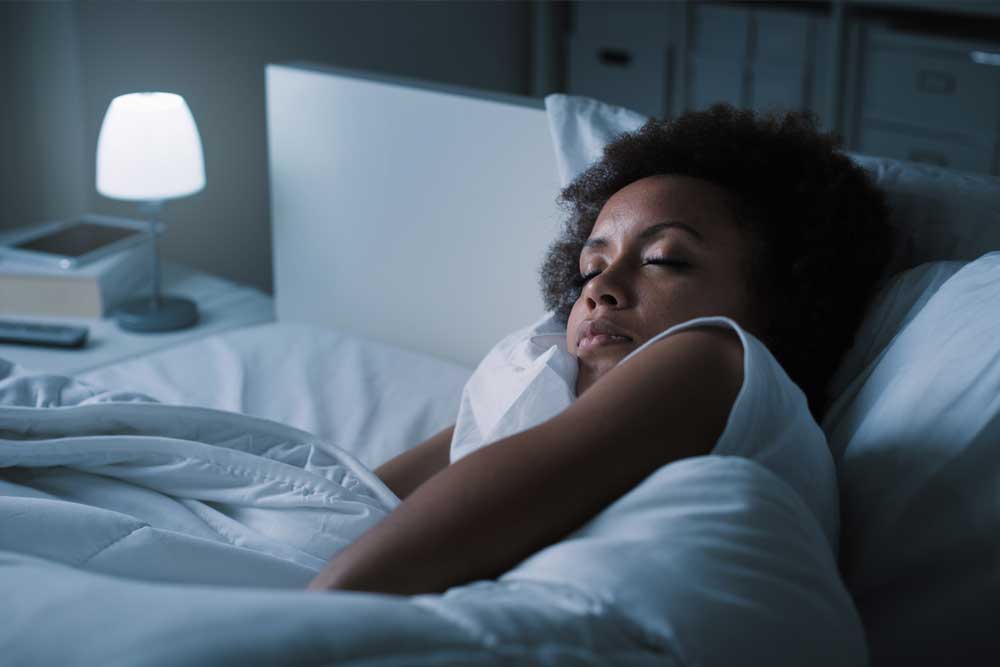Restless legs syndrome is a common condition that causes you to feel an overwhelming urge to move your legs. This often happens alongside paresthesias – unpleasant sensations such as tingling, pins and needles, and the feeling of something crawling all over you, with no obvious external cause.
Menopause restless legs syndrome is common. Read on to find out more about what causes these conditions, as well as treatment options and when to see the healthcare provider.
Find what you need quickly
What is menopause restless legs syndrome?
During menopause, it is not uncommon to experience unusual sensations. These can include tingling, pins and needles, and the feeling of something crawling all over you. The medical term for these unpleasant sensations with no obvious external cause is paresthesias.
As menopause restless legs syndrome is often worse at night, it can lead to sleep problems. It can also be associated with jerking movements in the arms and legs. These symptoms range from mild to severe. Some find them very distressing and disruptive. It is therefore important that you speak to your healthcare provider if you are struggling.are struggling.
What does it feel like?
At menopause, abnormal sensations tend to affect the feet, legs, hands, and arms. They can take many different forms, such as those below.
Menopause tingling all over the body
This feeling can start in one place or multiple places and travel. It’s hard to pinpoint and sleeping can be a challenge.
Menopause pins and needles
An uncomfortable feeling in your hands and feet that can strike at any time, often at night. It can be hard to get your feeling back.
Creeping feelings
It can feel like ants or flies, which is super annoying when you are trying to sleep Read more about skin changes.
Numbness
Waking up with a numb hand or foot can make the simple tasks of getting out of bed in the morning or going to the bathroom at night difficult.
Pain
Locked knees, joint pain, or aching muscles waking you up during the night? It could be due to hormonal changes in menopause. Read more about aching muscles.
As menopause restless legs syndrome is often worse at night, it can lead to sleep problems. It can also be associated with jerking movements in the arms and legs.
These symptoms range from mild to severe, and some find them distressing and disruptive. It is important that you speak to your healthcare provider if you are struggling.
How likely is restless legs syndrome during menopause?
- These symptoms are fairly common
- One study of 5,000 menopausal women found that 18.1% of 45-54 year old women suffered from restless legs syndrome
- This increased to 20.9% in the 55-64 age group
Read more about the stages of menopause.
How can you minimize restless syndrome?
- Avoid stimulants including caffeine, alcohol, and tobacco
- Exercise regularly
- Maintain good sleep habits, including sleeping at set times, having a relaxing bedtime routine and avoiding daytime naps
- Take a hot bath before bed
- Massage the affected parts of your body
- Take gentle, relaxing forms of exercise like yoga, Tai Chi, walking or stretching
As restless legs syndrome and paraesthesias can both be caused by other medical conditions, it is important to see your healthcare provider for a diagnosis.
Can hormone therapy (HT) help?
One small study found that symptoms of restless leg syndrome were more severe in those taking HT.
The relationship is complex between restless legs syndrome, paraesthesias, and other symptoms of menopause, which could be improved by HT.
For example, we know that restless legs syndrome can be worse if you are struggling with sleep – and HT can help to improve the quality of your sleep at menopause.
It is important to speak to your healthcare provider about your own personal treatment options if you would like to consider HT.
Read more about HT risks and benefits.
Restless legs and menopause FAQs
What causes restless legs?
For many sufferers, restless legs syndrome has no known cause.
However, we do know that it can have a genetic component and that reduced levels of a chemical known as dopamine in the brain can play a role.
While we know that restless legs syndrome and paraesthesias become more common at menopause, experts are still unsure as to how exactly declining hormone levels contribute. One theory is that changing estrogen levels can affect the amount of neurotransmitters, dopamine and glutamate, although more research needs to be done.
Restless legs syndrome can also be due to an underlying health condition. Common examples include iron-deficiency anemia, chronic kidney disease, diabetes, and an underactive thyroid.
Similarly, paraesthesias can have many possible causes. Certain medications and types of chemotherapy, low vitamin or iron levels, trapped nerves, diabetes, and multiple sclerosis are a few examples.
As there are so many possible causes for these types of symptoms, it is important to see your healthcare provider to ensure that you receive the correct tests and treatment.
When should you see a healthcare provider?
In a minority of cases, paraesthesia can be associated with serious conditions including stroke.
Seek urgent medical attention by calling 911 if you have a sudden onset of paraesthesias with:
- Loss of strength in any part of the body
- Slurred speech
- Loss of vision or any other sensory changes
- Drowsiness
- Any other serious medical concerns
Otherwise, it is a good idea to see your healthcare provider if your symptoms of paraesthesias or restless legs syndrome are constant, very bothersome, or if they keep coming back.
I can remind myself that the moment will pass
Learn more – the latest restless legs and menopause research
- Cleveland Clinic, Restless legs syndrome
- Cleveland Clinic, Pins and needles – when should you worry?
- Cleveland Clinic, Hormone therapy for menopause symptoms
- Knott L, 2018, Pins and needles, Patient
- Sieminski M, Karwacka M, Nyka W, Restless Legs Syndrome and Hormonal Replacement Therapy in Women at Menopausal Age, Neurology, Apr 2012, 78>
- Wesstrom J, Nilsson S, Sundstrom-Poromaa I, Ulfberg J. Restless legs syndrome among women: prevalence, co-morbidity and possible relationship to menopause. Climacteric. 2008 Oct;11(5):422-8





